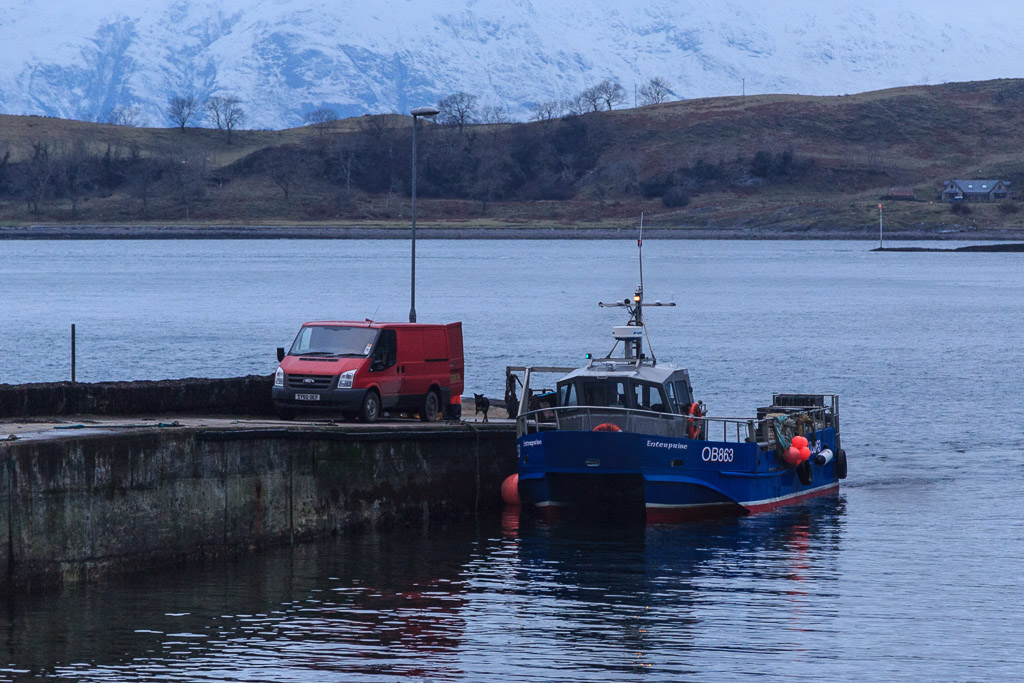We went round the south end of Eilean Ramsay before...
...paddling through the skerries on its west coast on our way back to the NE point of Lismore.
Then we were in for a treat. The flood tide was now running up the Lynn of Lorn and was being compressed in the narrow gap between Lismore and the Appin mainland where it was running at 2.5 knots. We took advantage of an eddy to carry us past the Lismore ferry pier then...
...down the long gravel spit to its south before enjoying a brisk ferry glide across to the island in mid channel. It certainly warmed us up!
East of the island, the tide dropped to 1.5 knots and I was able to get my camera out to capture this wonderful sunset glow in the sky above the Lynn of Lorn. Beyond the dark outline of Eilean Dubh, the distant Garvellachs were floating above the horizon.
We landed at Port Appin just after sunset and packed our things away in the gathering darkness and cold as a creel boat off loaded its catch. Although our winter trip was now over, we were glowing with memories.
The last day of our four day winter trip was a short 18 kilometres but it had been packed with interest: castles, history, industrial archaeology, natural history, islands, strong tides, paddle sailing, sunset, and good company, who could ask for more? If you look at the GPS track you can see where I stopped to take the photo of the sunset just before the finish at Port Appin. The tide certainly didn't waste any time in carrying me NE!

























































